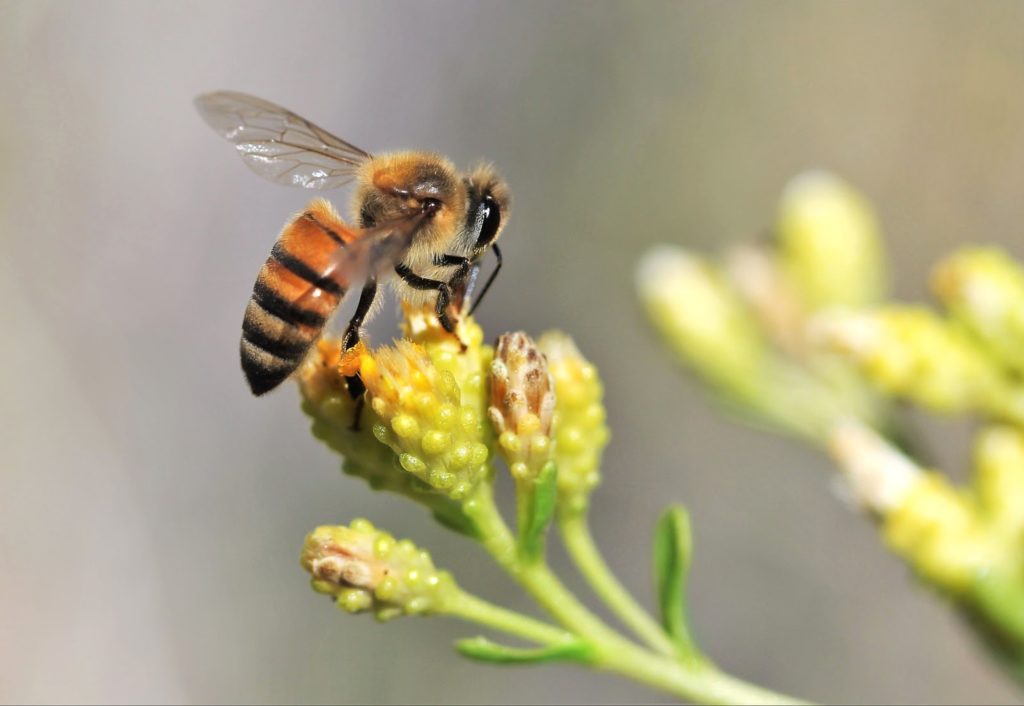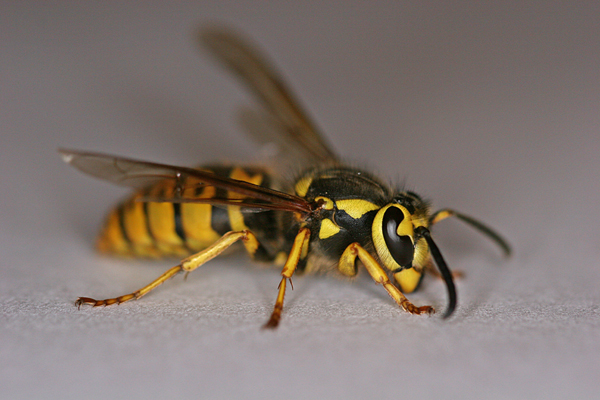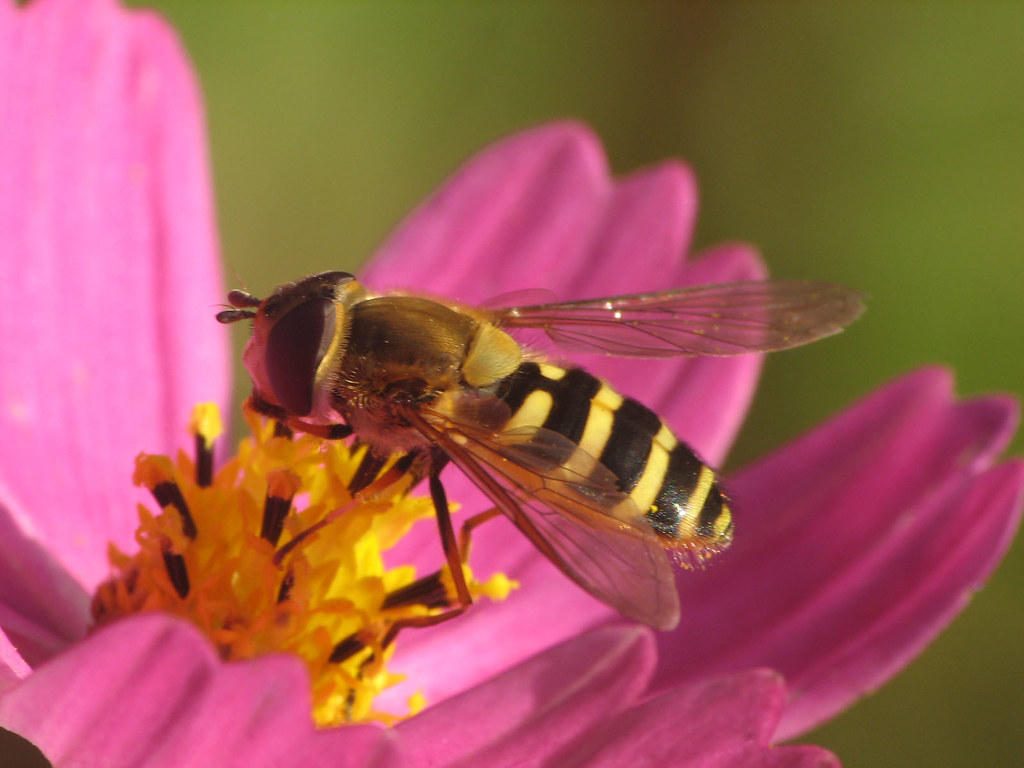Hoverflies are un-BEE-lievably good mimics of bees and yellow jacket wasps!
Mimicry is used by insects in several ways.
Some insects, like the ambush bug and praying mantis, look like plants. These predators sit very still, blending into their surroundings, and wait very patiently for their unwitting prey to pass by. Other insects, use mimicry to avoid predation, often by taking on the appearance of species with clear markings that are known to be dangerous. Hoverflies (Diptera: Syrphidae) are some of the most convincing mimics of all of the insects. Even experts can have a difficult time distinguishing hoverflies from bees and wasps, especially when working in the field.
Bees (honeybees, solitary bees, native bees; Hymenoptera: Apidae): Bees are important pollinators, usually with distinctive black and yellow strips. Bees have two pairs of wings and are much fuzzier than wasps or hoverflies. Bees have stingers, but are not aggressive under normal circumstances. Some species of bees (e.g. honeybees) have barbed stingers that become lodged inside their victim. When this happens, the stinger is pulled out of the body of the bee and the bee dies. For this reason, bees with barbed stingers only sting as a last resort, in an effort to protect their colony. Bees are beneficial insects that will leave you alone if you leave them alone.

cc-by 2.0 Renee Grayson
Yellow jacket wasps (Hymenoptera: Vespidae): Yellow jackets and some of their close relatives have colouring similar to bees. Like bees, wasps have two pairs of wings. Unlike bees, which are usually vegetarians, wasps are carnivores that eat other insects. Thus, wasps are beneficial insects, but they also have a bad reputation for harming people because they scavenge for food at our picnics and barbecues during the summer. Wasps also tend to be aggressive and will sting with little provocation.

cc-by-nc-nd 2.0 Bryan Jones
Hoverflies (Diptera: Syrphidae): Hoverflies belong to a completely different order of insects than bees and wasps. Like bees, hoverflies are pollinators and are often observed hovering over flowering plants in fields and gardens. Unlike bees and wasps, hoverflies only have one pair of wings. Hoverflies do not have a stinger. They also do not have biting mouthparts, so they can do no harm to people. Hoverflies protect themselves from predators, and people, by mimicking bees and wasps. In addition to pollinating plants, hoverflies provide another important ecosystem service: their larvae are predators of small plant-dwelling insects like aphids!

cc-by-nc-sa 2.0 Eero Sarkkinen
The case of the innocuous versus the evil twin: When making pest management decisions, be sure that the suspect is actually a pest. This can be challenge since insects often mimic each other or look very similar. An insect that looks, moves and acts like a pest may in fact be a look-alike or doppelganger.
Doppelgangers may be related (e.g. same genus) or may not be related, as in the case of monarch butterflies (Danaus plexippus) and viceroys (Limenitis achrippus). Doppelgangers are usually relatively harmless but sometimes the doppelganger is a pest yet their behaviour, lifecycle or hosts may be different.
Correctly identifying a pest enables selection of the most accurate scouting or monitoring protocol. Identification and monitoring enables the application of economic thresholds. It also enables a producer to select and apply the most effective control option(s) including method and timing of application. For the rest of the growing season, the Insect of the Week will feature insect crop pests and their doppelgangers.
Review previously featured insects by visiting the Insect of the Week page.
Contributed by Dr. Meghan Vankosky (@vanbugsky).
